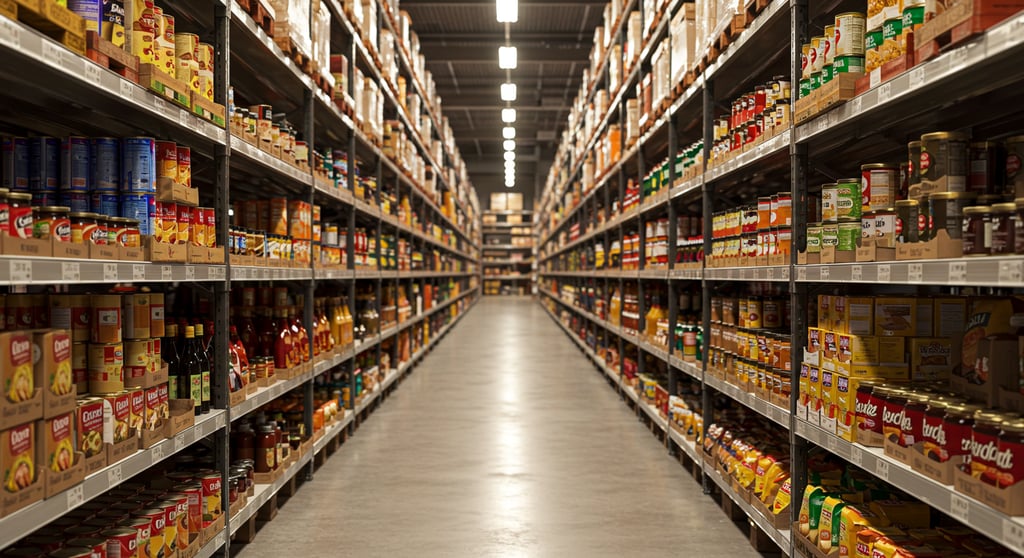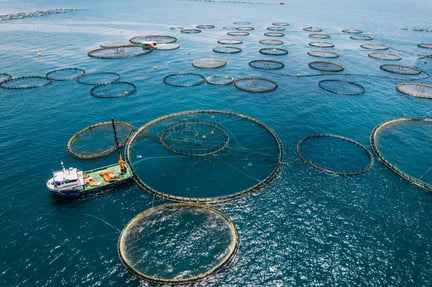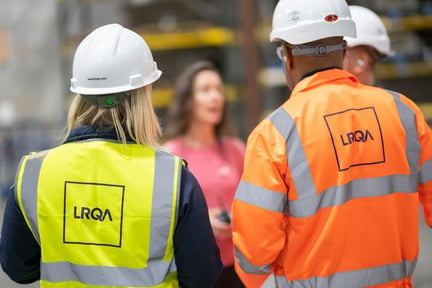For more than a decade, the food sector has viewed transparency as a competitive advantage, with claims like 'provenance assured' or 'sustainably sourced' helping brands stand out. Today, transparency is no longer optional – it’s a mandate.
Across sourcing, safety and sustainability, a wave of new and evolving regulations is exposing a common weakness in many food businesses: incomplete understanding of suppliers and insufficient visibility into supply chains.
While regulatory objectives vary – addressing environmental protection, consumer safety, packaging sustainability and beyond – they increasingly share a common expectation. Food businesses must not only know where their products and ingredients come from but also be able to prove that knowledge through data, verification and continuous oversight.
Among this growing set of requirements, three examples illustrate how diverse regulatory goals are converging around supply chain transparency and traceability: the European Union’s Deforestation Regulation (EUDR), the United States’ Food Safety Modernization Act (FSMA) traceability rules and the EU’s Packaging and Packaging Waste Regulation (PPWR).
Each has distinct aims, yet together they signal a clear trajectory. Transparency is no longer a best practice or a differentiator; it has become a foundation for market access, operational resilience and consumer trust.
A regulatory landscape built on supplier and ingredient transparency
New regulations are not emerging in isolation, they reflect a broader pattern. Regulatory authorities are no longer satisfied with company-level commitments or supplier questionnaires. They are demanding evidence; not just that businesses have policies in place but that they have detailed, verifiable knowledge of where their products come from and how they are tracked throughout the supply chain.
At the core is a challenge many organizations now face: their legacy systems and supplier management approaches were never designed for this level of scrutiny.
EUDR: Redefining responsible sourcing
The EUDR introduces a requirement long discussed but rarely enforced: traceability to origin. From December 2025, any business selling commodities such as cocoa, coffee, soy, beef or palm oil into the EU must demonstrate that its products are free from recent deforestation.
This demands evidence not just at the first tier of supply but at the point of origin itself: the specific plot of land where the commodity originated.
For many supply chains, this level of detail is simply not available in a verifiable format today. Businesses will need to build or overhaul traceability systems, re-examine supplier relationships and, in some cases, exit sourcing regions or partners where compliance cannot be assured.
The commercial risks are clear. Failure to comply means exclusion from the EU market. Yet the broader risk is erosion of buyer and investor confidence if a business cannot demonstrate responsible sourcing across all markets, not only in Europe.
Some leading brands have publicly welcomed the objectives of the EUDR, recognising that early investment in traceability and supplier due diligence can strengthen both compliance and consumer trust. Others, particularly those with complex or fragmented supply networks, have expressed concern over the pace and cost of implementation.
As Kimberly Coffin, LRQA’s Global Technical Director for Supply Chain Assurance, has said:
“This is not a question of willingness. It is a question of readiness. For many businesses, the data required simply does not exist in their current supply chain records. The challenge is not knowing what needs to be done. It is building the capability to do it.”
FSMA: Traceability as a condition of market access
The FSMA 204 traceability rule, known as the final rule, in the United States reinforces a similar principle. Although the original compliance date was set for January 2026, the FDA has proposed a 30-month extension, reflecting the significant complexities involved in achieving full compliance across the supply chain. Once in effect, the rule will require companies handling certain high-risk foods to maintain detailed, standardised records that enable rapid tracing of products from point of sale back to their source.
This is not a theoretical exercise. In the event of contamination or recall, regulators expect immediate access to accurate data. Businesses unable to produce such records face potential import refusals, fines or even facility shutdowns.
More importantly, buyers – particularly major retailers and food service providers – are increasingly requiring traceability beyond regulatory minimums. Supplier approval and renewal processes now often include assessments of traceability readiness, not just food safety certification.
The FSMA 204 rule reflects a shift from reactive to proactive supply chain management. Traceability is no longer about limiting the scope of recalls. It has become a condition for market access and a signal of operational maturity.
PPWR: Sustainability through visibility
The EU’s Packaging and Packaging Waste Regulation (PPWR) adds a third dimension to transparency expectations. Businesses must ensure that food packaging meets recyclability and recycled content targets and does not contain restricted materials such as PFAS in concentrations above the legal threshold.
These requirements extend beyond the direct control of food manufacturers. Packaging suppliers, material producers and converters must all provide verifiable data to demonstrate compliance.
For many businesses, this means reviewing not only packaging design but also procurement processes and supplier oversight mechanisms.
As with EUDR and FSMA, the risk is not only regulatory penalties but market exclusion. Retailers and food service operators are unlikely to accept non-compliant packaging, particularly as they face their own sustainability commitments and consumer-driven demands. At the same time, consumer expectations for sustainable packaging continue to rise. Shoppers increasingly look for products that minimise environmental impact, prioritising packaging that is recyclable, compostable or made with verified recycled content.
There is also growing sensitivity to packaging waste and the use of materials linked to pollution or harmful chemicals, such as PFAS. Brands seen as lagging in sustainable packaging may not only lose shelf space but risk damage to consumer trust and loyalty, especially among younger demographics who are driving sustainability as a purchasing priority.
Interconnected risks, not isolated challenges
While EUDR, FSMA 204 and PPWR differ in focus, they highlight a common vulnerability. Most supply chains were never designed for the level of transparency regulators now expect.
What these regulations collectively demand is a new approach:
· A clear understanding of supplier networks.
· Segmentation of suppliers based on risk.
· Reliable data capture and traceability for both ingredients and packaging materials.
· Continuous monitoring and readiness to respond to new compliance demands.
The rise of anti-greenwashing enforcement has sharpened this further. Claims of sustainability, ethical sourcing or recyclability must now be supported by credible data and third-party validation. Without this, businesses risk regulatory penalties and reputational harm, particularly as regulators move to penalise misleading or unsubstantiated claims across packaging, marketing and product labelling.
The LRQA perspective: Connected risks, connected solutions
At LRQA, we recognise that these regulations do not represent isolated challenges. They expose interconnected risks that require integrated responses.
Our portfolio reflects this understanding. We support businesses in:
· Supplier segmentation and risk assessment to identify vulnerabilities and prioritise assurance activities.
· Traceability and verification across commodities, ingredients and packaging materials.
· Regulatory readiness assessments for EUDR, FSMA 204 and PPWR.
· Advisory services that align compliance activities with broader operational resilience objectives.
Our global experience spans commodity sourcing, manufacturing, distribution and retail, enabling us to provide solutions that reflect the realities of complex, multi-market supply chains.
As Kimberly has consistently emphasised:
“The greatest risk is not regulatory change. It is assuming that existing processes will continue to be sufficient. They will not. Transparency requires capability, not just commitment.”
Conclusion
Transparency has become more than a principle or a differentiator. It is now a condition for market access, consumer trust and supply chain continuity.
EUDR, FSMA and PPWR are just three regulations amongst many that illustrate the growing expectation that businesses must not only understand their supply chains but also be able to prove that understanding through data, verification and proactive risk management.
LRQA is ready to support that journey, providing the clarity, credibility and connected solutions needed to navigate a regulatory landscape that will only grow in complexity and consequence.
The future is transparent. The time to act is now.









